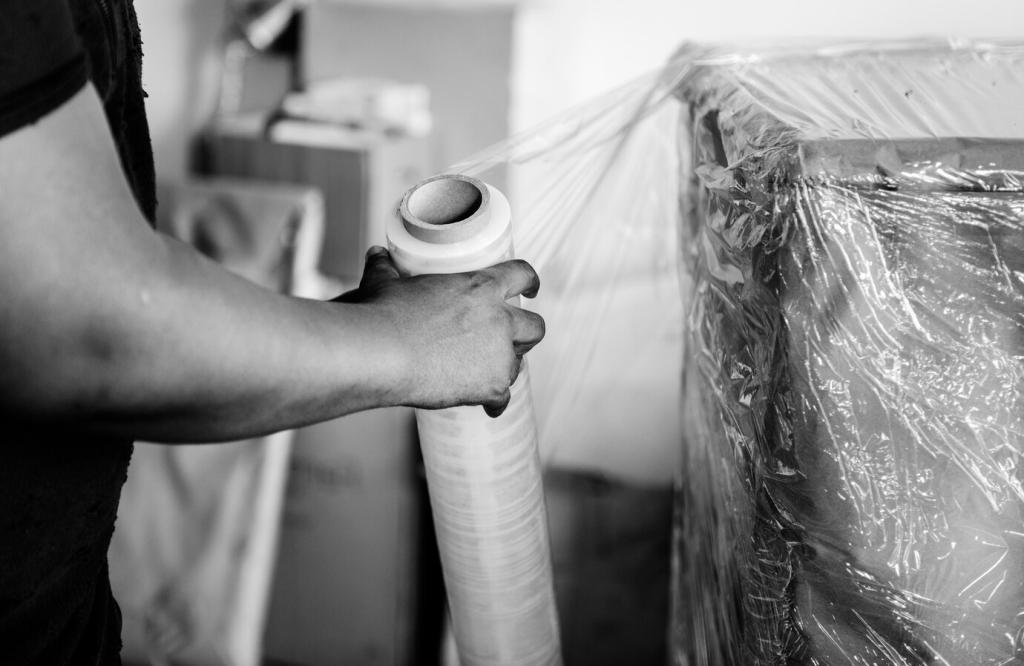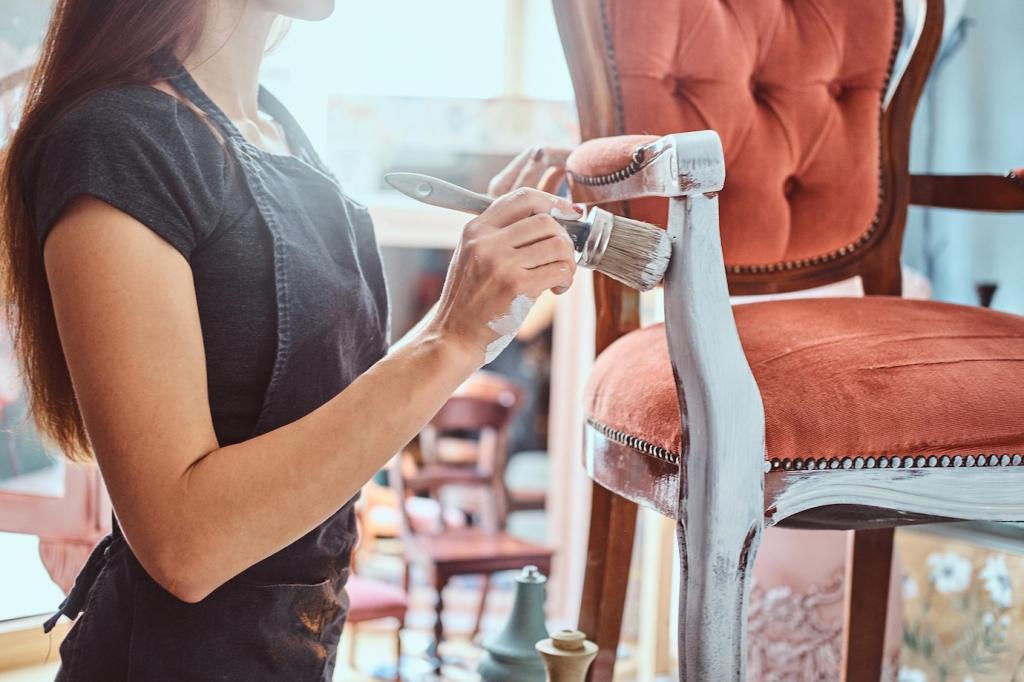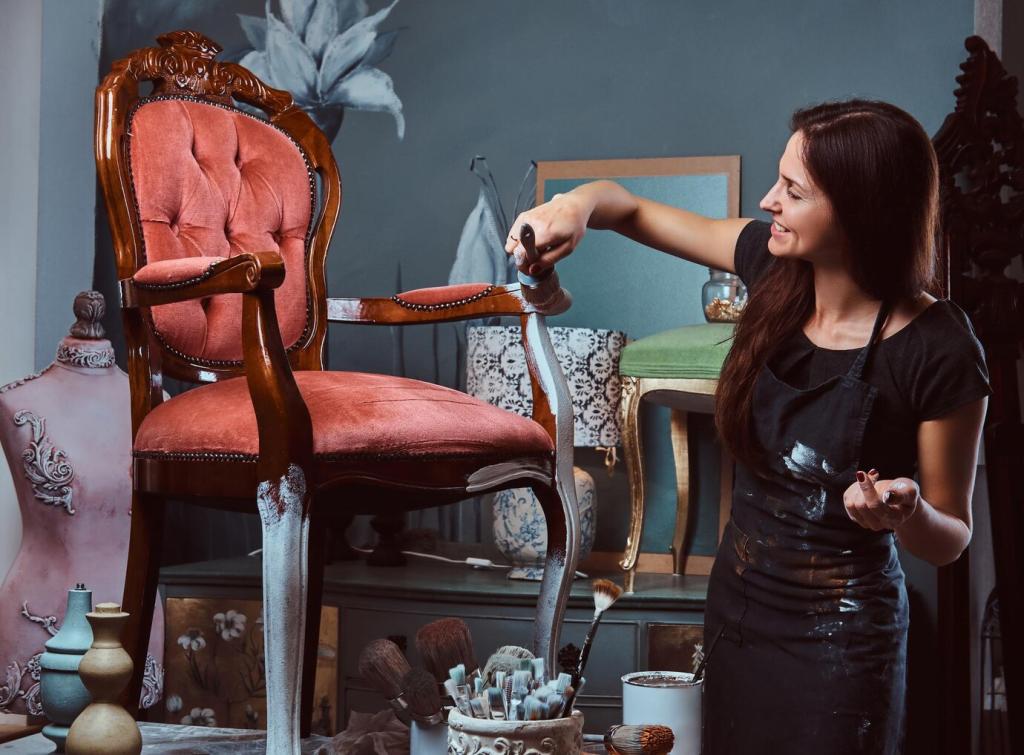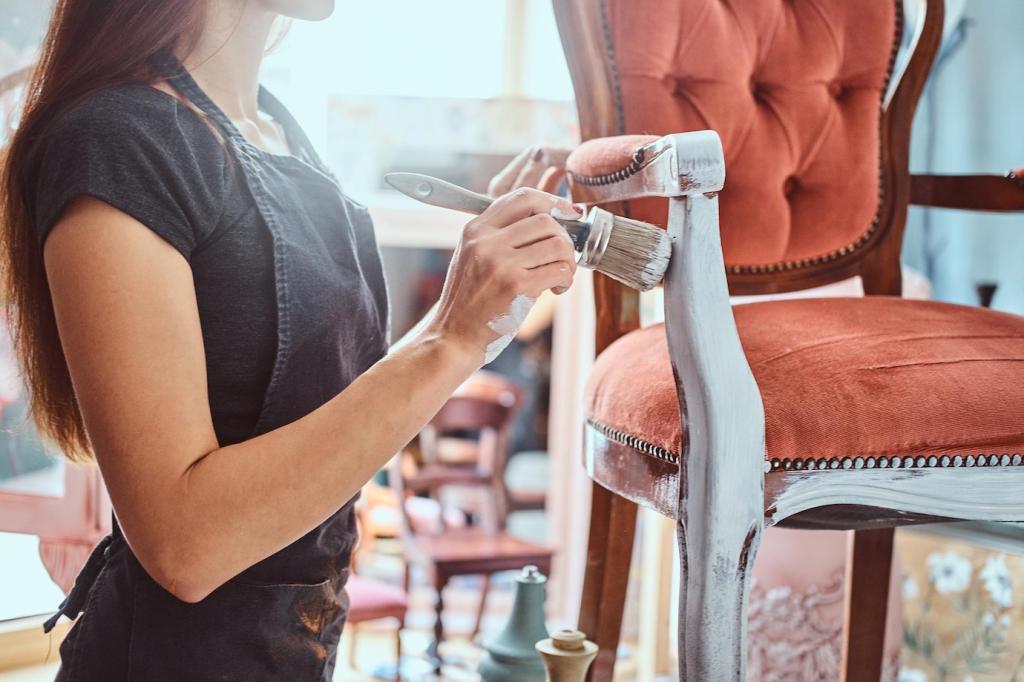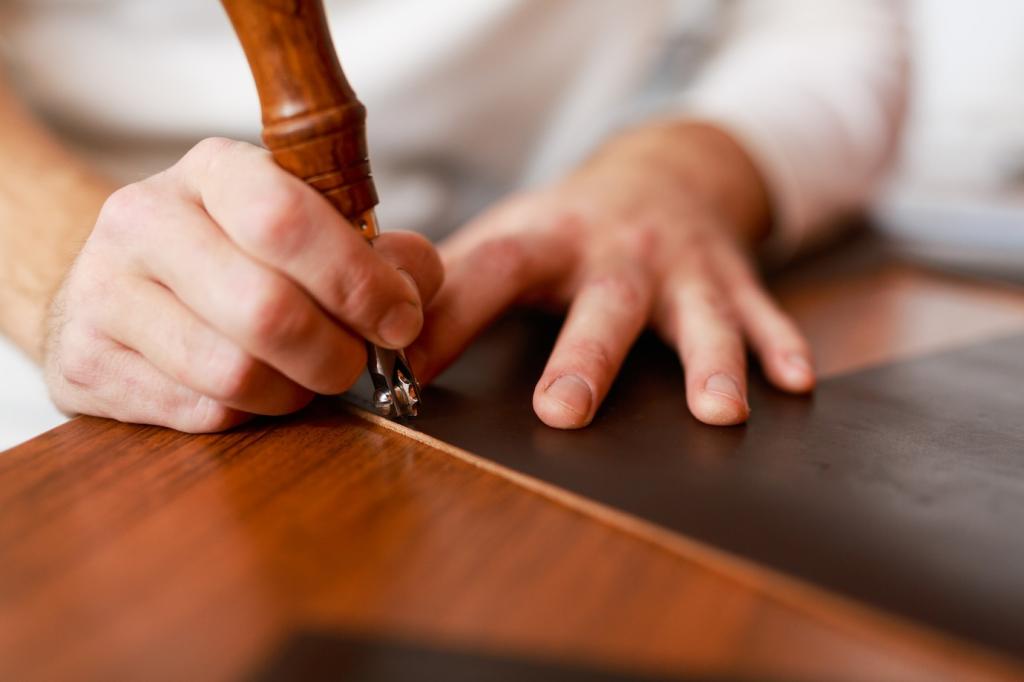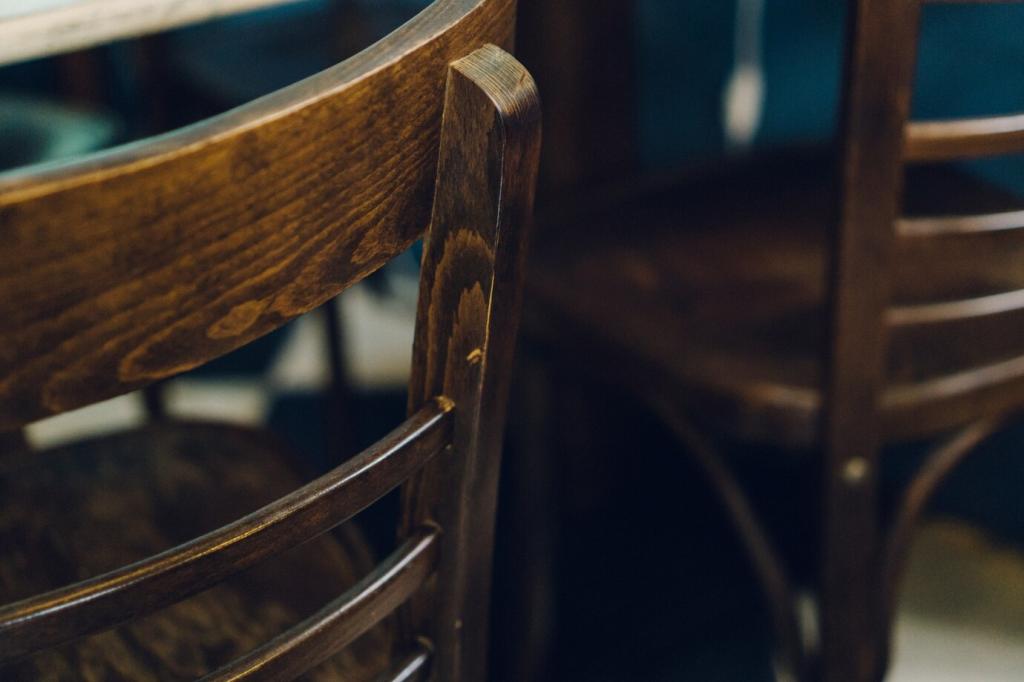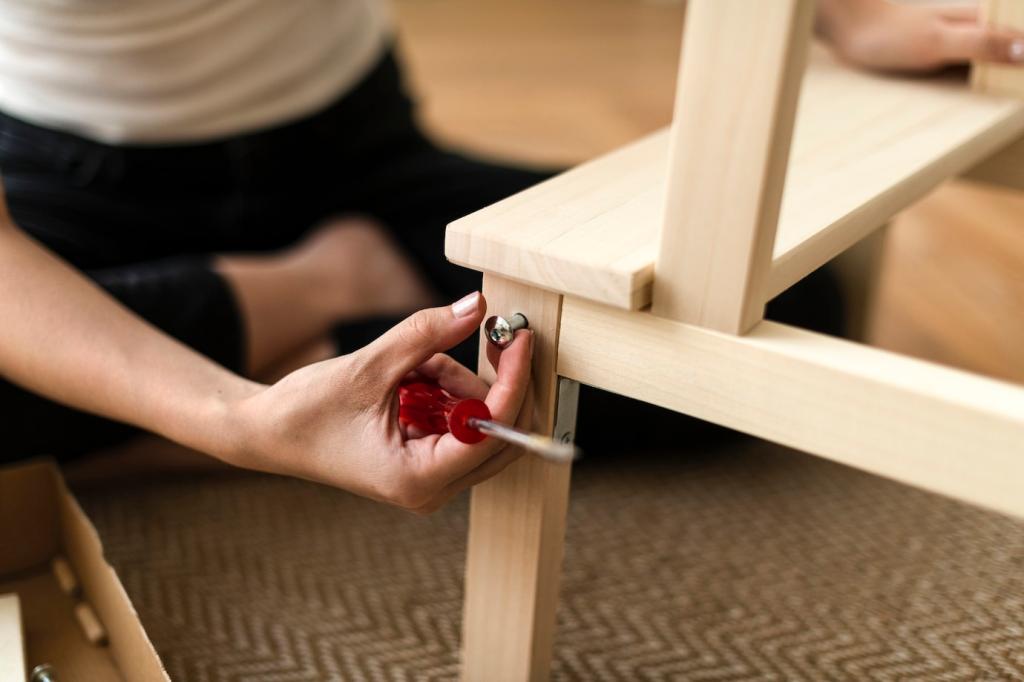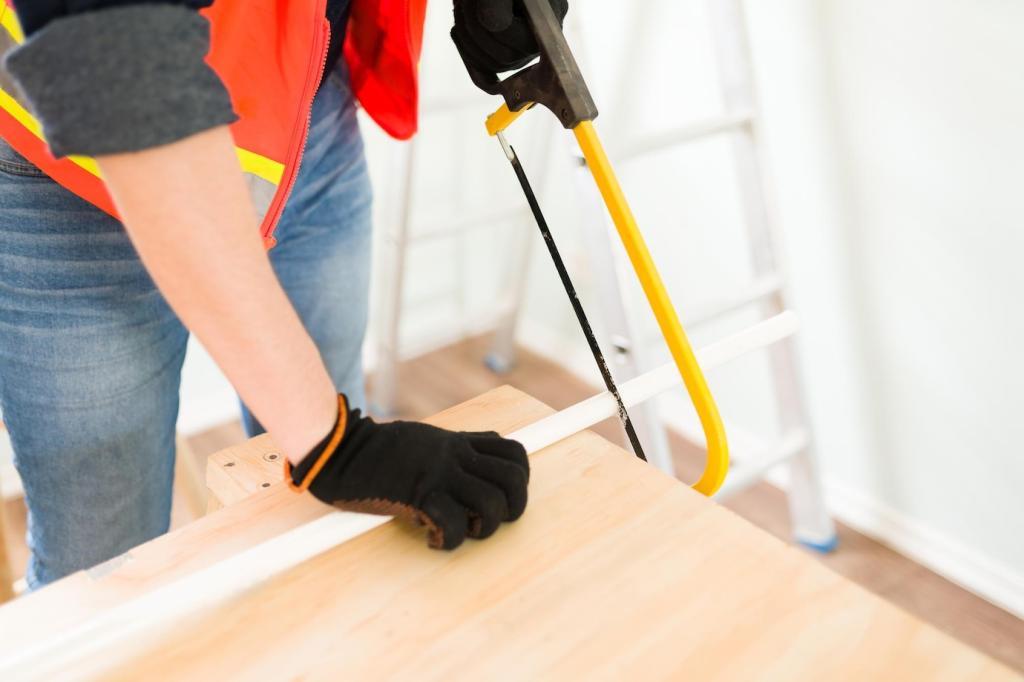Safety, Space, and Smart Tools
Old finishes can hide lead and brittle coatings. Use P100 respirators, good ventilation, and nitrile gloves. Wet-sand when possible and capture dust. Store solvent rags in metal containers to prevent fires. Comment ‘safety’ to receive our quick-start checklist before your next repair session begins.
Safety, Space, and Smart Tools
Start with a block plane, card scraper, cabinet scraper, calipers, sharp chisels, and a variety of clamps. Add a glue pot for hide glue, a small heat gun, and cotton pads for finish work. Borrow or share tools first. Tell us what is in your kit, and we will spotlight clever budget solutions.
Safety, Space, and Smart Tools
A folding bench, a good light, and a drop cloth can turn a corner into a capable studio. Organize abrasives by grit and tools by task. Establish a clean zone for finishing. Share photos of your setup; we will feature ingenious tiny workshops to inspire fellow restorers.
Safety, Space, and Smart Tools
Lorem ipsum dolor sit amet, consectetur adipiscing elit. Ut elit tellus, luctus nec ullamcorper mattis, pulvinar dapibus leo.

